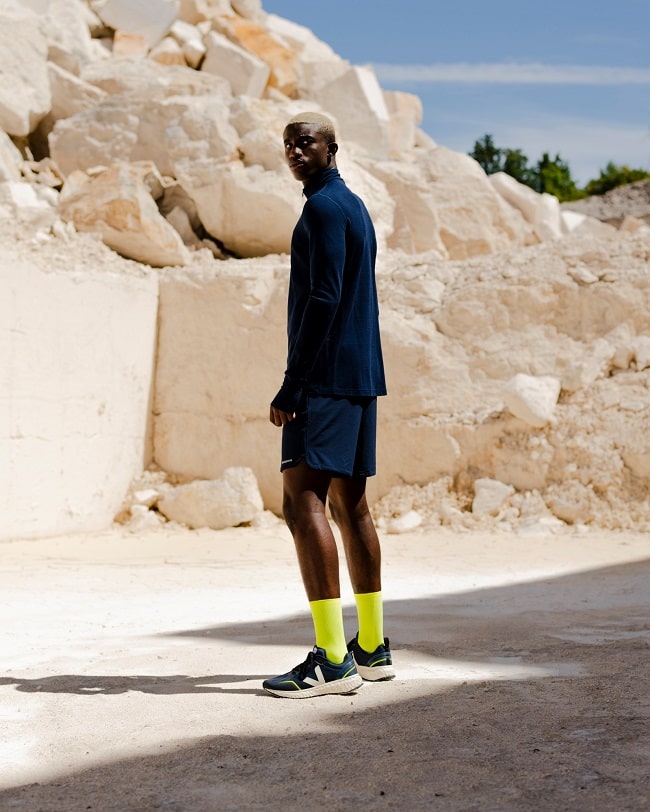1
HOME > Health & Fitness >
SUSTAINABLE ALTERNATIVES TO ACTIVE FABRICS
Written by Ivan Yaskey in Health & Fitness on the 21st May 2021

We’ve come to accept certain performance and fit standards from activewear, due nearly singularly in part to the fabrics used. We anticipate that whatever T-shirt or shorts we have on will stretch with our body, fluidly moving with our limbs rather than restrict movements even at extremes. We, at least in more recent decades, expect the fabric to control moisture and sweat, be it wicking it away to evaporate, drying once wet, or deodorising during a routine’s most intense moments. As a third factor, we seek out materials that let our skin breathe, rather than cause it to sweat even more, and provide some amount of protection against UV exposure. Although these aspects speak to the advancements of athleticwear, the other side is, synthetic materials and treatments propel these innovations. Think polyester and spandex as the two core components, as well as nylon. Unfortunately, the production of these fabrics is not inherently sustainable, and not only do synthetic materials clutter landfills once they’re out of use, washing them releases micro-plastics into the environment. For consumers looking to be more eco-conscious and sustainable, what options do you have? Do you simply turn a blind eye with your gym kit, or are there better alternatives that don’t compromise the performance we’ve come to expect? If you’re looking to lessen your environmental impact through activewear, start with the following options:
Recycled Fabrics
At least in the present, these are your best bet for getting something as close to traditional performance worthy as possible. This group encompasses recycled polyester, also going by names like Repreve, PET, and RPET. In all contexts, this polyester is constructed out of reused plastics, particularly water bottles that have a higher chance of ending up in the ocean. Also, on the subject of ocean waste, Vita repurposes fishing nets into nylon for apparel and accessories. Understand that activewear made from recycled fabrics may be a compromise: Most involve blended construction with non-recycled spandex or polyester.

Bamboo
At least for apparel, bamboo has transformed into the do-it-all fabric, no matter if a T-shirt, trousers, or activewear is being conceived. As a source, bamboo is one of the fastest-growing plants on Earth, and crops require less water than cotton. Beyond these general parameters, bamboo is particularly suited to activewear. Once its fibers are transformed from a pulp into a fabric, the material is relatively lightweight, soft, and breathable and provides moisture-wicking properties. Realise that bamboo-based activewear experiences the same issues as recycled materials. A touch of spandex may be added to increase its flexibility, and additional treatments for UV and moisture resistance may supplement its natural properties.
TENCEL
TENCEL has the same appeal as bamboo. Made of cellulose-based wood pulp, TENCEL feels light and breathable, utilises a sustainable resource, and has biodegradable properties. Giving it an edge in terms of activewear performance is a hair-like texture. This attribute works twofold. One, it feels soft against the skin, reducing chafing in the process. Secondly, this composition assists with wicking moisture away from the skin. As another asset, antimicrobial properties provide a natural amount of odour control, lessening the need for additional treatments.

Cotton
On most activewear lists, cotton ends up dead last – if not intentionally excluded. Cotton tends to be a contentious material, particularly for extreme, high-intensity activities. The fabric absorbs moisture once you start to sweat, and this can prevent your body from feeling warm – inviting hypothermia if you’re outdoors in cooler weather – and causes the material to feel heavy, if not somewhat rough. Yet, while cotton’s sustainability depends on how it’s grown, it’s being revisited by active and performance brands as of recent. While treated as more of an anathema in recent memory, cotton fabrics offer better breathability than polyester and are less likely to trap odours. Advancing these aspects is calico, an unprocessed, raw version of cotton that provides better absorbency. As such, cotton is perfectly serviceable for a low- to moderate-impact gym workout, but should be treated with caution for something more intense or outdoors.
Merino Wool
We’ve touched on why you should be wearing wool, most notably for its ability to trap warmth while naturally controlling moisture and odours. Considering this composition, merino wool has started catching on in the activewear market. You’ll rarely find it in T-shirt or shorts form, however. Instead, it makes a better, more sustainable base layer, pair of active socks, or cool-weather material. While it may be combined with spandex for greater flexibility, merino wool’s inherent properties allow it to control perspiration while holding onto body heat – two essential functions of base layers. Unlike the coarse fibers composing a sweater or peacoat, merino further achieves a finer consistency that won’t feel heavy even when you’re sweating it out. At the same time, it surpasses polyester-based workout garments by offering organic breathability to help your skin stay cool.


Trending
2
3
4
5
6
7
8
9
10










